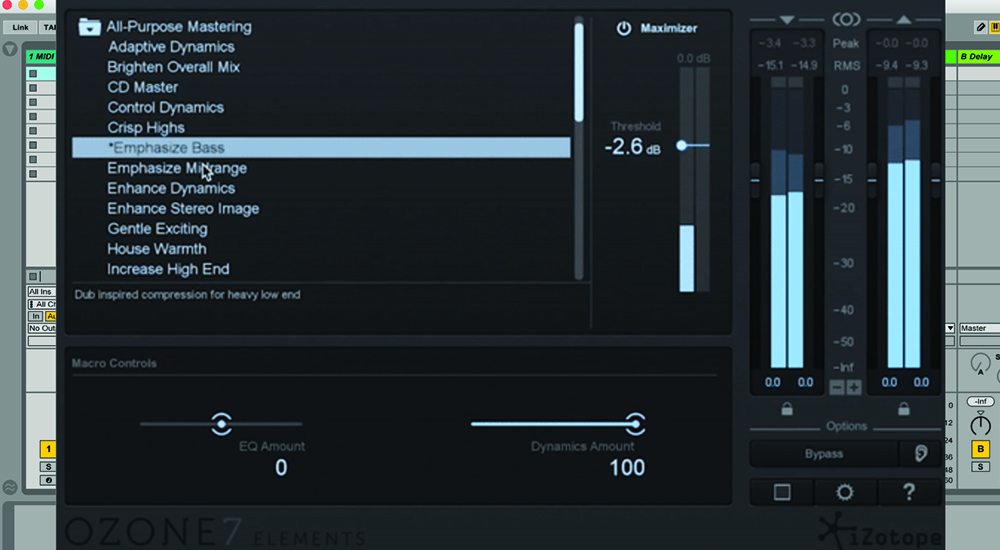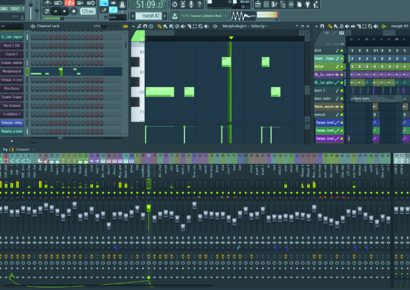Over the years Ozone, and now Ozone Advanced, have become the go-to mastering solution software for bedroom producers and professionals alike. However, there’s still a a lot to understand behind the theory and listening practices behind mastering. Accordingly, Ozone Elements has taken the power of the full versions and packaged it in a friendly interface that’ll get you results fast, which is perfect for demos and jam sessions. Rather than agonising over attack and release settings on compressors the user can get on with the fun stuff – making music.
Upon loading up the plug-in, you’re presented with the preset browser, two macro controls, a maximizer threshold control and level controls. Presets are divided into three categories: delivery-specific mastering, genre-specific master and signature presets. Cracking open the delivery-specific presets you’re given a range of options suitable for a wide variety of real world applications like MP3 mastering, vinyl mastering and even a setting for laptop playback.
When selected, each preset has a note disclosing instructions for best results and what the setting is designed to do. Also in the delivery-specific category is a sub-folder called all-purpose mastering with presets designed for a certain sound, ie. to emphasise bass, control dynamics, or brighten the overall mix. The genre-specific category is exactly what you’d expect; with presets designed for genres ranging from ‘light folk’ to ‘electronic clarity.’
The signature presets category contains a set of ten presets designed by mastering legend Greg Calbi. I assume at some point iZotope might add to this category, but it’s been a while since release now.
Most presets give you the option of cranking up, or down, the gain of the EQ curve and the Dynamics Amount, which adjusts the blend of your compressed audio vs. the dry audio acting as parallel compression. This is a great tool in itself for newbies to train their ears to recognise what’s good and not good. Maximizer threshold sets the point at which the look-ahead brick wall limiting is applied and applies make-up gain. Basically, lower the threshold and things get louder but you sacrifice dynamics, so it’s a balancing game. Another nifty feature is the gain matching button, which matches the loudness of your bypassed signal to your processed signal so you can concentrate on the actual changes in your mix rather than getting distracted by the increase in volume.
All in all, this is a handy and useful introduction to mastering. Veteran engineers may cringe at the idea of this plug-in, but in reality it does a pretty damn good job for the price, adding a more professional sheen to your demo, DJ mix or even final production.

